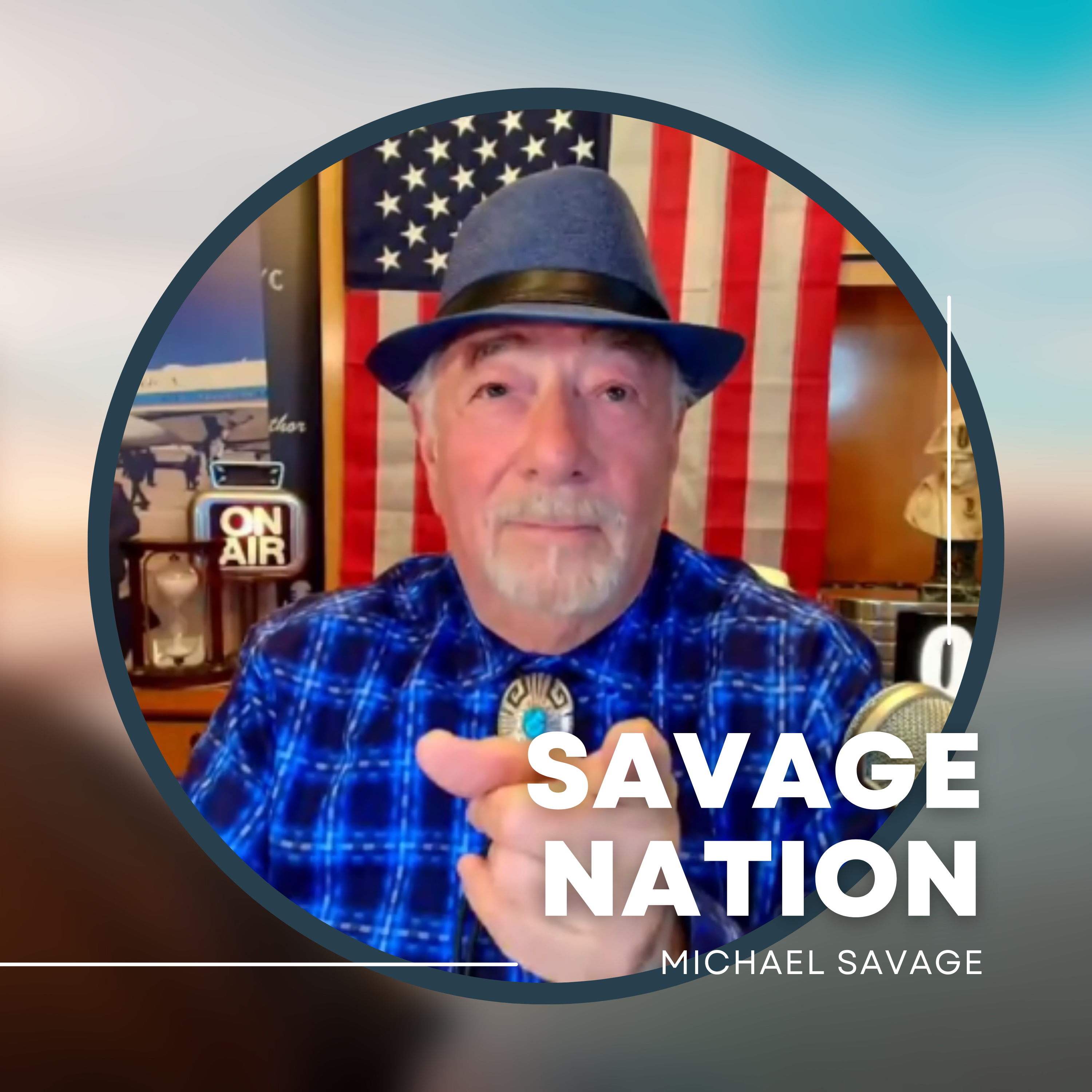
A Think First Podcast with Jim Detjen
Think First is a short-form podcast that makes you pause — before you scroll, share, or believe the headline.
Hosted by Jim Detjen, a guy who’s been gaslit enough to start a podcast about it, Think First dives into modern narratives, media manipulation, and cultural BS — all through the lens of gaslighting and poetic truth.
Some episodes are two minutes. Some are ten. It depends on the story — and the energy drink situation.
No rants. No lectures. Just sharp questions, quick insights, and the occasional laugh to keep things sane.
Whether you’re dodging spin in the news, politics, or that “trust me, bro” post in your feed… take a breath. Think first.
Visit Gaslight360.com/clarity to sharpen your BS filter and explore the 6-step clarity framework.
🚨Distorted (Advanced Copy) is set to release on October 14, and pre-orders are now available on Amazon and Barnes & Noble.
Reserve your copy today — and join me in cutting through the distortion.
Paperback and Kindle: Amazon
Hardcover: Barnes & Noble
A Think First Podcast with Jim Detjen
#81 Something Is Killing the Cows
A rancher finds his best bull bloodless at sunrise.
No tracks. No struggle. No answers.
From the 1970s panic to the Oregon cases making headlines today, “cattle mutilations” have never really gone away—they’ve just upgraded their tools.
In this episode, Think First breaks the case open from both sides: the paperwork and the poetry.
We follow the trail through FBI archives, media spin, biotech theories, eco-activists, and the faithful who still call it The Devil’s Tithe.
And then we feed fifty years of data to a closed-access AI that builds four new theories of its own.
Part mystery. Part mirror.
Because sometimes the question isn’t who did it—
it’s why we need someone to blame.
Plus: a hat-tip to Agent Mulder, and a zinger the coyotes won’t see coming.
Stay sharp. Stay skeptical. #SpotTheGaslight
Read and reflect at Gaslight360.com/clarity
Every mystery says more about the people chasing it than the thing itself. I remind myself of that every time I find myself standing somewhere that feels wrong. This morning, it was Utah. This is Think First, where we don't follow the script. We question it. Because in a world full of poetic truths and professional gaslighting, someone's gotta say the quiet part out loud. Cold air, thin light, that kind of dawn where the horizon looks like it's holding its breath. I parked just shy of the ridge because the dirt road ended before courage did. The silence was thick, no wind, no birds, not even a fly that wanted any part of it. Because nothing says normal morning like a perfectly dissected bull. At first glance, it could have been anything, a dead bull lying in the grass. But I've seen death before, farm death, road death, the kind that makes sense. This one didn't. There was no blood. None. Just the kind of stillness that makes you check your pulse. There was really no blood, but plenty of imagination. The eyes were gone, the tongue gone. And the precision of the cut, clean, almost polite. That's when the dread and the curiosity traded seats. I remember whispering, who does this? And then realizing I didn't want an answer. People like to talk about the supernatural as if it's far away. It isn't. It's exactly one quiet pasture away from wherever you're standing. Later, I'd learned that the same scene had played out hundreds of times before. Different ranchers, different years, same choreography. The first famous one was a horse named Snippy back in 1967. Reporters called it a mutilation because journalists never met a spooky noun they didn't like. Ranchers called it a warning. Everyone else called it a headline.
SPEAKER_05:Um as Snippy.
SPEAKER_01:Snippy the horse was found dead with the skin removed from her face in the San Luis Valley in south central Colorado. The week she was found, locals reported bright lights in the night sky.
SPEAKER_05:It became a sensation locally in when it finally hit the papers in the beginning of October. Reporters from all over the world descended on the valley. We descended on the valley, too.
SPEAKER_03:You're in southern Colorado in the San Luis Valley? At the UFO Watchtower. And I'm that crazy lady down the road.
SPEAKER_01:Judy Messeline runs the UFO Watchtower, a roadside attraction in Hooper, Colorado, close to the site where Snippy the Horse was found mutilated.
SPEAKER_05:Why do you feel the need to put Snippy on display?
SPEAKER_03:She's part of history. This is Snippy the Horse. There was no hide, hair, mate, or anything from the shoulder to the tip of the nose. When they opened her up, there were no organs inside. If you look here, you can see where they cut into the head to take out the brain. And um, there was no brain. There was no blood? There was no blood.
SPEAKER_06:It's very strange.
SPEAKER_03:It is strange because animals have a lot of blood in them. And there should have been a big, a big puddle of blood around this carcass.
SPEAKER_05:It had been raining a few days earlier, and then it was found about a hundred feet from where the tracks ended. And then there was these weird, they look like elephant tracks that were out there. There was a smell of like like medicine incense uh that was hovering around the body.
SPEAKER_03:It was weird stuff. The owner, Nellie Lewis, she blamed it on aliens mutilating her horse.
SPEAKER_05:How credible are the Lewis's claims? All the people out there, all those original children of the settlers, I mean, they're they're salt of the earth people. Any interest in making up a story? No, and they they never tried to profit off it. They actually were kind of pissed off that it turned into such a big deal.
SPEAKER_02:That clip is from Tucker Carlson on Fox Nation. We'll hear more from him later. By the mid-70s, entire states were on edge. Men patrolled their own fence lines at night. Helicopters, real or imagined, became villains with rotors. Senators demanded FBI involvement, because that's what you do when the news starts eating itself. The Bureau filled 300 pages of reports and came to the most American conclusion possible. Maybe predators, maybe panic. You could feel the culture changing speed then. The story of these mutilations was no longer local gossip, it was becoming a national myth. The same fear that used to take years to migrate, now did it overnight. A story like this doesn't need proof. It needs altitude. And somewhere between the sheriff's statement and the headline, the myth took flight. Unmarked helicopters, burn marks, zero arrests. Everyone convinced the explanation was hiding in someone else's jurisdiction. That's how this story travels. Half investigation, half campfire. It hops statelines faster than Wi-Fi. You start to notice the rhythm of it. Shock, disbelief, headline, repeat. Each cycle leaves less evidence and more legend. Every few years the same dance starts up again. Wyoming, New Mexico, Texas, Utah, Oregon. Different zip codes, same choreography. No suspects, no proof. Only the growing suspicion that the world might have rules it doesn't feel like sharing. People joke that ranchers must be cursed. Ranchers joke that journalists are. Either way, someone's always laughing, but no one's sleeping great. Fear has a sense of humor. It always shows up where the coffee's bad and the sky is too big. It shows up when logic calls in sick. And that's the thing about cattle mutilations. They aren't really about cattle. They're about the space between a person and their explanation. It's a story that invites you to lean in and laugh nervously because the alternative is to admit you don't know what's happening. It's part true crime, part ghost story, and part national pastime. And by the time national anchors arrive, the facts are outnumbered. The microphone becomes a mirror. Everyone sees what they brought with them. To the scientist, an unexplained sample. To the preacher, proof of prophecy. To the writer, chapter one. To the viewer, something to tweet before bed.
SPEAKER_06:All these bones are out here. This is where we see the lights. Every night. And that looks like a dead cow. And this looks like a dead cow up here. Last night there were lights everywhere out here. Jody, that is a cow. Holy cow. Oh my gosh. Nothing is even eating on it. Something's cut the red meat out. Oh my crowd. That's been cut. Last night. There's no blood anywhere. There's no eye. There's no blood. Jody, there's no blood. Tony, there's no blood. You don't even really smell. There's no Maggie's, there's no nothing. Look that way. The smoke is Chris's. That this is where we saw the lights last night. I knew it.
SPEAKER_04:Oh dude.
SPEAKER_06:I knew it.
unknown:What the fuck?
SPEAKER_06:I knew it. You think coyotes? No, no, that was cut. I want you to look at that. That is cut. There's no bite marks. Where do you see bite marks? It's still soft. It's still soft, Jody. Oh my gosh. Dude, it happened last night. You're scared?
SPEAKER_02:That mutilated animal was filmed by Aaron Lynn and Jody Houston, who claim to have seen strange lights over the pasture near O'Kayla, Florida, where the deceased cow was found. Do this. That's how it usually starts. Not with conspiracy boards. Not with late night radio. Just a person. A carcass. And a rule the world appears to have broken. Cue the music. Reports like this go back decades. They spike. They fade. They spike again. Like a fever that won't break. But the facts won't sit still. Too neat for coyotes, too sloppy for surgeons, too many cases for coincidence, too few receipts for a conspiracy. That tension between boring and impossible is the engine. It keeps the story breathing. Let's steel man the boring before we chase the exciting. Version A, the boring truth. Predators start with soft tissue. Flies and maggots clean house fast. Gas builds. The hide dries and splits in straight lines. Those lines look like razor cuts. Blood pools inside after death. It clots. The ground stays clean. Result: A sad, tidy scene. Nature doing its job with the lights off. Version B. The exciting truth. Someone, or something, is harvesting animals with precision tools, avoiding tracks, avoiding blood, avoiding responsibility, leaving just enough weird to keep the rumor fed. Television pitched a tent between those two. The format rarely changes. Aerial shot, close-up of a cut. A calm voice, we just don't know. Uncertainty sells better than closure. Even Tucker Carlson, one of the most mainstream voices to say, not one drop of blood on TV, knows the pause is a tool. He asks the question, then lets it hang. You can feel the audience lean forward.
SPEAKER_01:On multiple occasions, sitting U.S. Senators have demanded the FBI investigate these mutilations. The FBI has declassified hundreds of documents related to mutilations. They detail the lengths that law enforcement has gone to solve this mystery. In September of 1974, there was a surge of mutilations in the Great Plains. The situation drove Senator Carl Curtis of Nebraska to demand an FBI investigation into what he called a series of incidents stretching from Oklahoma to Nebraska. The Bureau referred the request to the Fish and Wildlife Service, which blamed, quote, small mammals such as foxes and opossums. In 1975, Senator Floyd Haskell of Colorado, a Democrat, followed up with the FBI once more. FBI Director Clarence Kelly responded by acknowledging the reported use of an unidentified helicopter near the scene of a mutilation in Colorado. But the director shrugged off the case, saying, These actions do not constitute a violation of federal law and therefore are not subject to FBI jurisdiction. In 1978, Senator Harrison Schmidt, a former astronaut who had walked on the moon, reached out directly to then Attorney General Griffin Bell, requesting that the Justice Department re-examine its jurisdiction in this area. Schmidt was deeply concerned about the mutilations. He told a local paper, either we've got a UFO situation or we've got a massive, massive conspiracy that is enormously well funded.
SPEAKER_02:Other shows widen the frame, tie cases to strange lights, tie them to hot spots like Skinwalker Ranch in Utah. The owner there said, plainly, that he's seen daylight mutilations with precise-looking cuts and no blood underneath. Here's the pattern people miss. Every time the story returns, the tech updates. The script doesn't. In the 70s, cults and helicopters. In the 90s, stealth planes and black projects. Now, drones and AI. The FBI's 1979 wrap-up leaned toward predators and scavengers. Veterinary studies, including controlled carcass tests, showed how fast natural decay can fake precision. Fake precision. Oregon, 2019, five prime bulls dead, reportedly drained. Texas, 2023, six cows with tongues missing across three counties. Ground clean. Pattern. The more the news covers it, the more reports appear. Plot it on a timeline and you get a heartbeat. Quiet. Panic. Quiet. Panic. Humans love edges. We see a clean line and think intelligence. We see a circle and think a tool. That says more about our brains than about biology. Still, if you've ever walked up on one in person, you know why people doubt the boring. The scene feels staged, even if no one was there to stage it. So, what are we doing today? We are not promising to solve a half-century riddle. We are going to think well inside it. We'll look at how the story got built, what the records actually say, how our minds tilt the table, where the facts force us to slow down. We'll keep the door open for the weird, because the weird is half the fun, but we'll earn the right to knock on it. Let's go back to the 70s. Gas lines, skyjackings on the news, the Cold War humming, a feeling that someone, somewhere, is in control. Unmarked helicopters buzz small towns. Ranchers take turns staying up. A senator asks if cults are stalking the planes. The FBI replies in polite language that translates to, we don't know. Local papers run aliens harvest our cows, next to ads for chainsaws. America's classic mood, scared, entertained, ready to argue. Out on the range, the details repeat. Tongues gone, eyes gone, sex organs removed, sometimes utters, sometimes a near-perfect circle. The repetition becomes a pattern, and patterns feel like plans. We remember what fits the pattern. We forget what doesn't. Not dishonest, just human. There's also money here. A prime breeding bull is a small fortune. If you find one dead in a way that seems impossible, you want a culprit with a face. Coyotes don't have good faces for blame. Neither does time. A clean villain helps you sleep, helps you file paperwork. Every legend meets a clipboard. This one has dozens. The official files aren't sexy. They list wounds, times, temperatures, lack of tracks, lack of blood, lack of anything helpful. Some include organ samples, fly larvae stages, stomach contents. Again and again, the paperwork hints at natural processes that look unnatural when you meet them late. But every so often, a case refuses the file. No tracks in soft ground. No blood where blood should be, organs removed in ways that feel beyond scavengers. That handful keeps the door propped open. Attention does its own work. A sheriff's post goes up. Local news runs a 12-inch story. National shows call. A streamer wants a document. YouTube drops a thumbnail with a perfect circle. The cycle feeds itself. The story gets bigger than the ground. That doesn't make the story false. It makes it social. There's pride too. Ranchers aren't hobbyists. They've dragged carcasses out of creeks, pulled calves at 3 a.m. If they say, this looks wrong, they're not auditioning for television. They've seen a thousand normal deaths. This wasn't one of them. You've got to respect that, even if the answer turns out to be boring. So how do we keep two things true? The humble science that explains most cases and the honest reports that don't fit. We use a simple model, with two clocks. The biology clock runs on decay, insects, scavengers, weather. It's slow, steady, unbothered by opinions. The attention clock runs on headlines, fear, and the very human need to know. It's fast, jumpy, loud. When attention outruns biology, mystery fills the gap. When biology catches up, the audience is already somewhere else. That's why this story resolves rarely and repeats often. We'll come back to the clocks. For now, the human equation.
SPEAKER_00:In 2019, the remote plains of Harney County, Oregon made national news. Scattered amongst groves of ponderosa pine were a handful of mutilated cattle. The cows had an almost surgical removal of their tongues and other organs. But the most astounding thing is that the scenes where these cattle were found were pristine, no tracks, and not one drop of blood. The carcasses were drained dry.
SPEAKER_03:What?
SPEAKER_02:Why would anybody do this?
SPEAKER_06:It makes no sense.
SPEAKER_02:When attention outruns biology, mystery fills the gap. When biology finally catches up, the audience has already gone home. That's why the story never ends, it just refreshes. So, what happens when you sink those clocks for a second? You get clarity, but only for a second. Then someone posts a new photo, and the cycle resets. So let's slow the pace, catch our breath, and look at the suspects we can actually find. People, not portals, theories that smell like diesel and disinfectant, the ones that could survive an audit. Fluorescent paint on a hide, anticoagulants in blood, trace anesthesia, only vets use. That built one of the strangest but most human ideas so far, industrial bioespionage. Imagine rival biotech firms using cattle as living test kits, sampling for contamination, gathering proof for lawsuits or leverage. Cows don't lie, they graze the same fields for years, their organs are time capsules. If you want to know what's leaking into the soil, you open a cow. If you want to avoid questions, you do it quietly. So you mark the animal, you take the sample, you leave a scene weird enough to keep everyone arguing about aliens. The company gets its data, the rancher gets a headline, the rest of us get folklore. Not bad for a night's work. Next possibility, the prion panic. The idea that some mutilations were quiet calls, government teams removing infected animals before markets melt down, hazmat suits mean no footprints, bleach kills odor, no announcement, no panic, just clean precision and plausible confusion. Not evil, not heroic, just bureaucracy with scalpels. Then there's the insurance loop. Hard times, thin margins. One dead bull can mean bankruptcy. If the death looks natural, you eat the loss. If it looks mysterious, you file a claim. Cue a few clever adjusters, a few staged scenes, and a new rumor born from paperwork and desperation. It's not a national plot. It's rural improv. Sometimes survival looks creative. Then come the protesters, eco-activists using performance art to send a message, a silent sermon in the dirt, eyes gone so we can't see, tongues gone so we can't speak, genitals gone, so the species stops here. Symbolism cuts deeper than blades. Finally, the spooks. Every long mystery needs at least one government chapter. Intelligence trainees practicing evidence removal in real conditions. Mission? Enter. Do the work. Leave confusion behind. If that's true, they passed. Fifty years later, we're still grading the exam. And all of it, the fraud, the science, the activism, the espionage, fits inside one bigger idea. When the biology clock and the attention clock fall out of sync, panic wins. There's a whole chapter on that and distorted. Not a conspiracy, just a pattern. Before we open the portal to the paranormal, let's meet the oldest suspect of all. Faith. It's the oldest suspect in the book. When facts run out, faith volunteers. In every generation, when people meet the unexplainable, they draft a moral. They look at a scene that feels wrong and say, it must mean something. Frontier ranchers called it the devil's tithe. They didn't need lab work. They needed language. A dead cow became a sermon. Evil at work in broad daylight. By the 1970s, preachers and tabloids spoke the same dialect. Satanic cults in the fields, rituals under the stars, pastors warned from pulpits while talk shows rolled footage. Symbolism replaced evidence. Tongue for speech, eyes for witness, genitals for legacy. Take them all, and you've silenced the animal in three languages. It's poetic, it's terrible, it's very human. Faith isn't foolish, it's ergonomic, it gives chaos a handle. Even evil can be comforting when the alternative is randomness. Evil says there's a plan, and we like plans. That's the thing about religion and rumor. They use the same nervous system. Both thrive where certainty fails. Both promise that someone, somewhere, still holds the script. You can trace the rhythm. First comes the shock, then the search, then the sermon. When science can't answer fast enough, theology steps in wearing a badge. The devil gets deputized. And once a story gains moral gravity, it's almost impossible to deflate. The belief does what beliefs do best. It starts adapting, swap demons for drones, Satanists for scientists, same melody, new lyrics. That's how myths survive the news cycle. They learn to rhyme with progress. So when we talk about cults and sacrifices, we're also talking about an ancient reflex, the need to translate fear into order. Faith gives fear manners. It teaches it which fork to use. Psychologists have a name for this reflex. Hyper agency detection. We assume intention behind motion. Bush rustles, predator, light flashes, pilot. Cow dies strangely. Someone did it. That bias kept our ancestors alive. Now it keeps cable news alive. Humans are pattern junkies. If the world looks random, we invent choreography. If the story lacks a villain, we hold auditions. The demon theory works because it feels organized. The unknown turns personal. That's easier on the nerves than admitting nature doesn't care about closure. Here's where the humor sneaks in. If a demon really wanted cattle, it wouldn't bother with scalpels. But our imagination has an MBA from Harvard. It knows precision sells. We picture a supernatural entity with a stainless steel fetish. That's how modern our fears have become. Even our devils believe in good lighting. Faith isn't the punchline, it's the control group. It shows what happens when the meaning clock outruns the others. When silence lasts too long, the story fills itself in. That's where we are now. A century into the myth. Half a century into the panic. And still looking for someone or something to sign the paperwork. But faith isn't the last suspect. It's just the one that never asks for credit. For credit. Now we move from pulpits to keyboards, from folklore to feed, from prayer to programming, because the next voices in this investigation don't preach, they calculate. Feed 50 years of data into an algorithm. Ask it what happened to the cows. It won't give you a suspect. It gives you poetry. Four theories. All smart. All spooky. All human. Just written by something that doesn't breathe. Quantum bioresonance, microbes vibrating cows out of existence. Temporal echo, future humans borrowing DNA through time leaks. Symbiotic nanoflora, airborne fungi pruning the herd for planetary health. Hollow neural feedback. Our collective fear shaping what we see. None are provable, all are revealing. Even machines copy our addiction to meaning. Add a fourth rhythm. Computation. Biology says things rot. Attention says things trend. Meaning says things happen for a reason. Machine says things fit an equation. Together, they create distortion. The real magic trick: even a machine that doesn't dream can hallucinate purpose. That's how contagious our need for answers is. What scares us isn't missing organs. It's missing certainty. A few dead cows reminded us knowledge is fragile. Religion, science, data, everyone took a swing. No one landed clean. Maybe the point isn't to solve it. Maybe it's rehearsal for doubt. Practice for bigger mysteries ahead. As Distorted explains, confusion isn't a bug. It's a tactic, a feature of living in a world faster than our explanations. We've spent decades trying to name the culprit. Maybe the culprit is the clock. But before we close it, maybe it's worth asking a few things. What if the real mystery isn't what happened to the cattle? But what happens to us when they do? If every mutilation ends in the same argument, what does that say about the wound we're really trying to heal? Have we spent 50 years chasing predators? Or protecting our need for wonder? Why does certainty feel smaller than curiosity? If belief keeps the story alive, what would truth do to it? When scientists, ranchers, and storytellers all stand over the same carcass and see different culprits, which vision is clearer and which one just feels better? And if time itself keeps rewriting the scene, maybe the mystery isn't repeating, maybe it's reminding us to look up once in a while. Back at the ridge, I stare at the bull. The sun's higher now, but it doesn't help. Light just makes the wrong things clearer. The flies have finally arrived, late, like tourists showing up after the crime scene's been cleaned. I tell myself it's biology, not witchcraft or aliens, and then I realize that's what everyone tells themselves right before the story gets good. So I take one last look, get back in the jeep, and drive toward the The horizon where reason ends and rumor keeps the coffee warm. By sunset, the internet has theories. Tomorrow, a podcast. Maybe this one. Because when the clocks fall out of sync, even the coyotes look like they're in on it. Call it a confession. I'm not just analyzing this story, I'm choosing the version I want to believe. Because some part of me, the same part that grew up watching the X-Files, still hopes the universe is bigger and stranger than our spreadsheets. Brandon Fugel started as a skeptic. He bought Skinwalker Ranch thinking data would close the case. Now even he admits the ranch keeps writing back. So yeah, I'll side with Agent Fox Mulder on this one. The guy with that poster in the basement office at FBI headquarters. I want to believe. Not because it's proven, because hope is half the fun. And mystery. Mystery keeps the lights on in the dark. You've been listening to Think First, where we try to understand the stories that try to understand us. Today's episode pulled from FBI archives, field reports, and some very creative writing by yours truly. For more on how narrative shapes reality, check out Distorted, the book that maps these same patterns across media, politics, and belief. I'm Jim Detchen. This is Think First. You don't need all the answers, but you should question the ones you're handed. But I do know we're not done asking, because somewhere in the servers, locked behind passwords longer than scripture, there's an intelligence helping me think through the next part. A system built to calculate, not believe. And yet, when I showed it the evidence, it didn't shrug. It dreamed. It offered four theories of its own. One quantum, one temporal, one microbial, and one that suggests belief itself leaves fingerprints. Those are next. And if you want to hear what happens when reason sits down with something smarter than us, keep listening. The investigation isn't over. It's just getting self aware, else entirely. Until next time, stay skeptical, stay curious, and always think first. Mystery solved, just kidding.
Podcasts we love
Check out these other fine podcasts recommended by us, not an algorithm.

The Megyn Kelly Show
SiriusXM
Hidden Brain
Hidden Brain, Shankar Vedantam
The Tucker Carlson Show
Tucker Carlson Network
Cato Podcast
Cato Institute
The Joe Rogan Experience
Joe Rogan
Common Sense with Dan Carlin
Dan Carlin
The Clay Travis and Buck Sexton Show
iHeartPodcasts
Revisionist History: The Alabama Murders
Pushkin Industries
Freakonomics Radio
Freakonomics Radio + Stitcher
Fearless with Jason Whitlock
Blaze Podcast Network
The Daily Beans
MSW Media
The Glenn Beck Program
Blaze Podcast Network
Countermine
Dondi&Karlin
The Shawn Ryan Show
Shawn Ryan
Left, Right & Center
KCRW
Political Gabfest
Slate Podcasts
Stuff You Should Know
iHeartPodcasts
TED Talks Daily
TED
The Fifth Column
Kmele Foster, Michael Moynihan, and Matt Welch
The Jesse Kelly Show
iHeartPodcasts
The Jordan B. Peterson Podcast
Dr. Jordan B. Peterson
